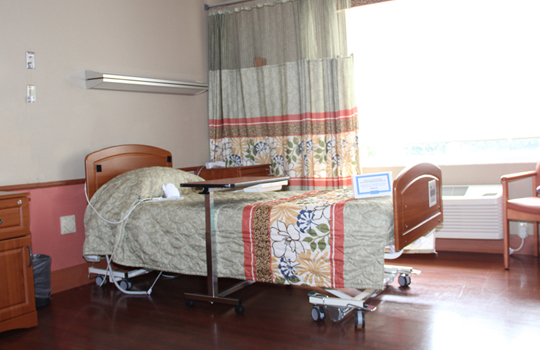Temesta Addiction Detox Program WY
Home
Temesta Addiction Detox Program WY Resources & Information
Temesta Addiction Detox Program WY
The Place of Volition in Addiction: Differing Approaches and their Implications for Policy and Service Provision. 9865, is available for those seeking steps toward recovery for drug rehab and drug detox. A period of rehabilitative care is essential to help the individual understand the nature of their drug addiction and to equip them for a life free from substance abuse.
Drug and alcohol addiction has devastated the careers of a lot of aspiring and budding talents and also those who were already doing well in their careers. When I Call a Substance Abuse Hotline, Is the Conversation Confidential?
Here are Some Even more Resources on How Does Drug Detox Work

Extra Resources For Laudanum Abuse Program WY
How long they’ve been showing signs of addiction? Addiction Helper carry out free over the phone telephone assessments, conducted by one of our highly trained and skilled addiction treatment experts. This is a dangerous pathway, Marlatt proposes, to full-blown relapse. Consequently, drug abuse is damaging to both physical, cognitive, and behavioral aspects of a person, transforming him from someone with wisdom to someone unwise.
Right here are Some More Resources on Laudanum Abuse Program
Relapse prevention[edit] An influential cognitive-behavioral approach to addiction recovery and therapy has been Alan Marlatt's (1985) Relapse Prevention approach.[34] Marlatt describes four psychosocial processes relevant to the addiction and relapse processes: self-efficacy, outcome expectancies, attributions of causality, and decision-making processes. Both programs are about turning your life over to a higher power.
A lot more Resources For How Does Drug Detox Work WY
I am a 35 year old single mom who works and is going to college … Narcotics Are Big Business. You never know what you might find in a house in a quiet, suburban neighborhood. Warning signs that a friend or loved one is abusing drugs Drug abusers often try to conceal their symptoms and downplay their problem. You will also see a decline in family and church activities. Gradually, getting and using the drug becomes more and more important to you. Our commitment is to provide the most compassionate and competent treatment and dual diagnosis care in the most inspiring setting imaginable! NIDA provides a list of questions that can be asked when researching different facilities and programs to help determine whether the treatment will provide a more positive benefit for the individual. While we incorporate best practices and proven treatment approaches into all our services, we also know that every person is unique and each treatment plan must reflect that individuality. When an addict is not engaging in addictive behaviour or taking drugs, their dopamine levels severely drop, leaving them feeling restless, anxious and depressed; this is why they are compelled to carry on with the addiction. If you’re worried that a friend or loved one might be abusing drugs, look for the following warning signs: Physical warning signs of drug abuse or addiction Bloodshot eyes, pupils larger or smaller than usual Changes in appetite or sleep patterns Sudden weight loss or weight gain Deterioration of physical appearance, personal grooming habits Unusual smells on breath, body, or clothing Tremors, slurred speech, or impaired coordination Behavioral warning signs of drug abuse or addiction Drop in attendance and performance at work or school Unexplained financial problems; borrowing or stealing Engaging in secretive or suspicious behaviors Sudden change in friends, favorite hangouts, and hobbies Frequently getting into trouble (fights, accidents, illegal activities) Psychological warning signs of drug abuse or addiction Unexplained change in personality or attitude Sudden mood swings, irritability, or angry outbursts Periods of unusual hyperactivity, agitation, or giddiness Lack of motivation; appears lethargic or "spaced out" Appears fearful, anxious, or paranoid Warning signs of commonly abused drugs Marijuana: Glassy, red eyes; loud talking, inappropriate laughter followed by sleepiness; loss of interest, motivation; weight gain or loss. Choosing to go to an inpatient treatment center is the first step toward regaining your life and living on your own terms. Motivational interviewing, which is designed to increase patient motivation to change behavior and enter treatment.[7] Motivational incentives, which uses positive reinforcement to encourage abstinence from the addictive substance.[8] Treatment can be a long process and the duration is dependent upon the patient’s needs and history of abuse. Twitter will use this info to make your timeline better. S. have trusted our Christian addiction treatment center to deliver their boy from addictions and find new purpose in life. Once a permissive set of beliefs have been activated, then the individual will activate drug-seeking and drug-ingesting behaviors. Drug Addiction is a recognised illness of the individual’s bodily cravings and dependency and the minds psychological state.
Click Here for More Information
Previous Next
You may also like:
Pentobarbital Addiction Rehab Clinics Fairmount GA
Lsd Rehab Treatment Facilities Ada MN
Methadone Rehab Clinics Booneville IA
Pathways Drug Rehab Lawton OK
Barbiturates Detox Treatment Freeville NY
Opium Addiction Detox Facility Ross County
Oxycontin Detox Facilities Dillard GA
Lortab Addiction Facilities Clarksville TN
Clonidine Addiction Rehab Clinics Huston ID
Symtan Rehab Centers Redwood VA
Darvon Addiction Detox Clinic Templeville MD
Codeine Addiction Treatment Facility Geyser MT
Percocet Detox Centers Ogden AR
Dextroamphetamine Abuse Programs Spring Arbor MI
Drug And Alcohol Addiction Recovery Sebastopol CA
Demerol Addiction Rehab Clinics Laguna Hills CA
Roxanol Addiction Program Morgan GA
Damason-p Detox Centers Tappan NY
Mushrooms Rehab Facility Near Me Perrysburg OH
Endocet Addiction Rehab Program Arlington IL
Seconal Detox Program Yorktown TX
Christian Help For Alcoholics Scarborough ME
Non 12 Step Rehabs RI